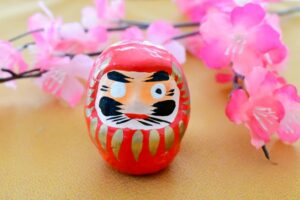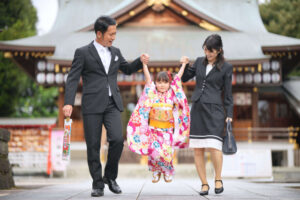Reference from the Agency for Cultural Affairs
- English subtitles -
Japanese characters
- Next is the number of characters.
How many letters are there?
In Japanese, there is a table of characters called the Japanese syllabary.
Look at this table.
There are 46 basic hiragana characters.
In addition, there are also hiragana with dots such as “ga”, “gi”, “gu”, “ge”, and “go”.
There are also hiragana characters with 〇 such as “pa”, “pi”, “pu”, “pe”, and “po”.
There are also hiragana with small, “ya”, “yu”, “yo”, such as “kya”, “kyu”, and “kyo”.
There are about 100 hiragana in total.
The same is true for katakana.
There are many kanji.
In Japan, we start studying kanji from the first grade of elementary school.
We will study the 1000th kanji in 6 years of elementary school.
By the time you graduate from high school, you will study 2000th Kanji.
- Japanese subtitles -
日本語の文字
2、次は文字の数です。
文字はいくつあるでしょうか。
日本語には五十音図と言う文字の表があります。
この表を見てください。
基本のひらがなは46あります。
その他に、「が」、「ぎ」、「ぐ」、「げ」、「ご」、のように点々があるひらがなもあります。
「ぱ」、「ぴ」、「ぷ」、「ぺ」、「ぽ」、の様に〇があるひらがなもあります。
「きゃ」、「きゅ」、「きょ」、のように、小さい、「ゃ」、「ゅ」、「ょ」、がつくひらがなもあります。
ひらがなは全部で100位あります。
カタカナも同じです。
漢字はたくさんあります。
日本では小学校1年生から漢字の勉強を始めます。
小学校6年間で1000位の漢字を勉強します。
高校を卒業するまでに2000位の漢字を勉強します。
If you have any questions, ask them for free! ➡ Japanese Question Form

e-Learning course at once

All e-Learning courses (60 lessons) can be taken at once.
You can take all e-Learning courses at once. The e-Learning course offers 60 lessons over a three-month period. For those who can’t wait for 60 days, we have prepared a link that allows you to take all the classes at once.
If you would like to take the course for free as before, please be assured that the e-Learning course will still be delivered free of charge day by day.
The secret is "To ask questions"
Could you explain that word?
What do you mean by …?
Hold on. Could you speak more slowly?
I’m sorry. I couldn’t catch what you said.
The HH JapaNeeds Team
Your tutor. Your time. Your location.

What are the meanings of daruma and colors?
We Japanese have been familiar with Daruma-san since childhood through games such as “Niramekko” and “Daruma-san Koronda. Daruma-san has a

The Meaning and Origin of Shichi-Go-San
Living in Japan, have you ever heard of the event called Shichi-Go-San? Shichi-Go-San is a celebration that makes you feel

Japan’s Easiest-to-Understand Blood Type and Personality Classification
For those born outside of Japan, when a friend asks, “What is your blood type?” When asked, “What is your

Differences in Work Attitudes Between Japanese and Foreigners
Even among people of the same nationality, there are differences in the way of thinking, and these differences are even





